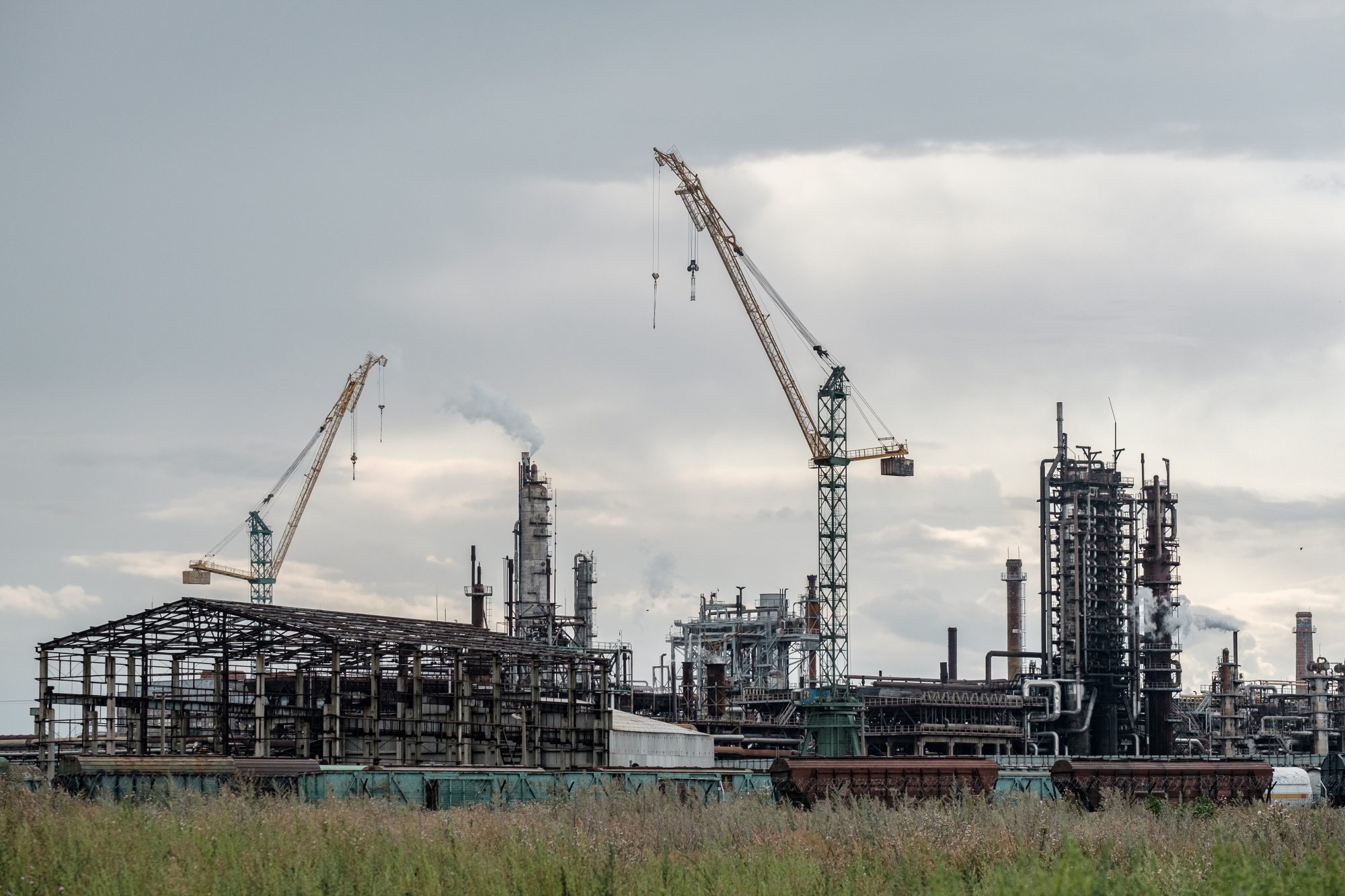Lee Jones, head of manufacturing solutions at NBS, explains why it is essential to reduce the construction industry’s carbon footprint, why speed is of the essence and how having the correct information available can help facilitate the process
With the British Government announcing that by 2023 all financial and listed companies will need to publish a roadmap of how they will reach net zero by 2050, the construction sector, responsible for 40% of total emissions in the UK, has a challenging time ahead.
In the UK construction industry, sustainability is no longer a “nice-to-have” option but an essential part of ensuring UK resilience to the ongoing impact of climate change.
To avoid the most severe effects, global temperature increase needs to remain below 1.5C, but to do this corporations and governments must cut emissions by 45% by 2030 and be at net zero by 2050. With 2030 looming and with the built environment responsible for 40% of all CO2 emissions, construction has to get its house in order.
Yes, there have been some positive first steps. Between 1990 and 2019 the UK decreased its emissions by 27% and many businesses and organisations are already committed to a sustainable future and have been working towards a greener industry for some time now. RIBA, as an example, encourages architects to design more sustainably, setting clear goals on carbon emission reduction within its 2030 Climate Challenge. However, in reality, we could all do more, and we should do more.
But are we entirely aware of the practical changes that need to be made for construction companies to become sustainable? I believe the focus to reach this objective should be in four key areas: business leadership, design and construction methods, material choices and digital adoption.
Growth of the green building materials market
The rising demand for energy-efficient buildings together with governmental help and increased awareness, are linked to the exponential growth of the green building materials market – with an 11% CAGR forecast between 2021 and 2021, according to Verified Market Research(1).
Construction product manufacturers are at risk of falling behind if they don’t start applying tangible change now. With architects being encouraged to create more sustainable designs and specifiers increasingly opting for products with aligning green credentials, manufacturers have a golden opportunity ahead. Not taking it and not having their eco-friendly credentials clearly demonstrable is an own goal. In our NBS ‘Sustainable Futures Report’(2) a key finding is that transparent product information remains a difficult challenge with one in two respondents saying it was hard to obtain clear sustainability proof when specifying.
Of course, achieving net-zero operational carbon is not the sole responsibility of building product manufacturers or specifiers alone and, as happens in building safety, the industry as a whole should be involved to bring about real change and perhaps to totally re-tool existing approaches.
Tackle construction waste and commit to circular production
An example would be to tackle construction waste and the need for manufacturers to commit to circular production. What’s required is a model of production and consumption where the materials and products can be reused, recycled and have a longer in-use life as possible. Optimising material use to reduce waste should be everyone’s responsibility and as with safety, a cultural shift should look to whole life costs and not just the upfront bottom line.
Providing comprehensive information about the product’s end-of-life options, whether it is in regards to its recyclability or repurposing options is key to looking ahead. The industry needs to encourage a more cradle to cradle approach, where waste circulates and becomes an almost eternal resource with a circular life cycle. Government policy also has a role, while the Spring Statement’s announcement of zero-rating VAT for energy-saving materials is a positive move and will help encourage homeowners to make greener choices, the fact that retrofitting is less tax-efficient than building new is an anomaly that certainly needs addressing.
However, all these things are small steps. Where the important and biggest challenge is, is to re-educate ourselves about our approaches towards how we actually build something.
Innovative building processes offer a way to reduce the construction industry’s carbon footprint
Further innovation in building processes, including modern methods of construction, can offer a way to establish a greener built environment that can foster a more sustainable perspective sector-wide, by using sustainable materials and precision-engineered manufacturing techniques that help reduce wastage.
These will help win the hearts and minds of reluctant players by demonstrating these innovative approaches not only offer tangible sustainability benefits but also provide broader business wins in terms of improved productivity, more accurate scheduling and increased profitability.
The shift that is happening among specifiers towards choosing low carbon materials and passive systems is to be welcomed, and it is proven to reduce operational emissions in the finished build. According to our latest Sustainable Futures Report(3) only 37% of the interviewed experts consider sustainability at Stage 0 with the ‘Strategic Definition’. This only increases gradually over the next few Stages to over half considering it at Stage 2 with the ‘Concept Design’ (57%) and Stage 3 for the ’Spatial Coordination’ (51%). Sustainability must be considered from the outset and is not a bolt-on.
Digital adoption is often discussed from a building safety perspective. However, the golden thread, which is both the information that allows you to understand a building and the steps needed to keep both the building and people safe, will benefit the industry by offering a better understanding of what is in a building and its operational requirements. This could then also be used to ensure greener choices and operations. The data available can lead to improved decision-making enabling a robust calculation of what the building’s actual carbon cost is including during the operational and decommissioning phases.
We already have the tools, methods and processes to achieve our objectives and need to use them to step forward as an industry and make a global impact for a greener future that is needed and also required by clients. According to the results of the Sustainable Futures Survey, 87% of clients recognise the need to consider sustainability early on in the building process.
Clients are opting for more sustainable options on projects
Sustainable decisions are being increasingly considered by clients, while specifiers are choosing more sustainable options on projects and manufacturers providing more sustainable credentials relating to their products. There must also be a commitment to sustainability as a business. So, how can we transition to greener businesses when fossil fuels are powering part of the industry? It will not be an easy path, but the first stone on the road should be to understand the company’s footprint and its operational energy. There are simple steps, such as identifying if your electricity tariff sources renewable energy or reviewing your company fleet to phase out high emitting vehicles. This information will help target what can be easily changed and establish a road of change ahead.
Being a sustainable business involves not only a commitment to having greener products but also being an eco-friendlier company. In order to achieve this, it is necessary to measure your carbon impact and identify the hotspots to plan reductions when possible. I would suggest taking a practical view of the process. It is important to be realistic when aspiring to carbon neutrality or net-zero status. For many businesses this will be a long and winding road, so assessing where you are today and putting in a long term plan will be much more effective than taking a reactive yearly approach. This tactic will smooth difficulties and will be more manageable and achievable.
Carbon offsetting is also an option to reduce the construction industry’s carbon footprint
Carbon offsetting can also be used as an option to reduce the construction industry’s carbon footprint, but it should always be the last resort and a path to follow when it is not possible to reduce the impact of the business activities in any other way. However, when choosing how to offset emissions, there are several options, nationally and internationally. At NBS we joined Forest Carbon in June 2021 and have contributed to carbon reduction schemes equal to our operational carbon emissions each year since 2019. Supporting the local environment is a key aspect of the RIBA 2030 climate challenge but international offsetting is also an approach that can offer immediate access to offsets.
Once you have made your business path to carbon neutrality clear, there are third parties that can provide businesses with the appropriate recognition. One example is the UN Climate Neutral Now Pledge(4), which NBS is also a part of.
Our Sustainable Futures Survey results show how respondents under 34 years of age are more likely to view becoming net-zero as a long-term project. Potentially linked to this, the same group’s responses also indicated they are less likely to believe that sustainability is very or quite important to the leadership team or their organisation. This only indicates the urgency for education and changes in the construction industry and the responsibility we hold.
We need to be active and let others know what we are doing, to achieve results as a whole sector. The time to complete the roadmap to 2050 is ticking, but why not take a step forward and accelerate the process to reduce our footprint and have a cleaner and more sustainable planet? It is in our hands.
References
1 https://www.verifiedmarketresearch.com/product/green-building-materials-market/
2 https://www.thenbs.com/sustainable-futures-report-2022/
3 https://www.thenbs.com/sustainable-futures-report-2022/
4 https://unfccc.int/climate-action/climate-neutral-now

Lee Jones
head of manufacturing solutions














